- Home
- David Hewson
Carnival for the Dead Page 11
Carnival for the Dead Read online
Page 11
‘You must know . . .’ Teresa began.
‘Don’t . . . ask . . . me . . . where.’
He stood there, sighed, wrinkled his nose.
‘Didn’t even charge them,’ he said. ‘How often do I get to say that?’
They waited.
‘She was beautiful,’ the man said. ‘She looked so happy. The man in the mask too, I guess, not that I saw him or heard him say much.’ He scratched his straw boater. ‘Anything really.’
The gondolier leaned forward and his breath reeked of alcohol.
‘Love,’ he said, tapping the side of his nose. ‘A man like me gets to recognize it. That was a woman in love. They didn’t have a penny between them. A gift from a gondolier. She looked broke and scared and . . . kind of happy too. Like they’d made a decision about something. Who knows? I felt sorry for her. I envied that Medico della Peste. What else was I supposed to do?’
She left Tosi to catch the night vaporetto to his home on Sant’Elena, the quiet faraway island at the very tip of Venice beyond the Giardini. Then she set off walking back to Zattere on a long, circuitous route following the signs for the Accademia before diverting across the large open square of Campo Santa Margherita near the university. Even at this hour some of the bars were open, with crowds of young people huddled on the street, laughing and joking, some in costume, others, students, with laurel wreaths around their necks, signs of the same kind of success that she had once enjoyed herself.
When Teresa Lupo was getting mildly drunk in Rome with a circlet of green leaves on her shoulders Sofia was here in Venice, troubled, perhaps recovering from a suicide attempt if her mother was to be believed. Teresa still wished she’d known, even if the consequences could have been far-reaching. A sudden and overwhelming food of sadness fell upon her as she crossed the broad expanse of Santa Margherita. She fell onto one of the benches there and found herself watching the gatherings of the young around her, all so carefree, oblivious to the future, with its challenges and uncertainties, already beginning to gather round them.
She was not, by nature, an introspective person, preferring action, logic and insight to rumination, doubt and indecision. But perhaps that facet of her character was simply an unconscious effort at self-deceit, a trick by which she allowed herself to survive each day unscathed by the insistent uncertainties that dogged everyone, whether they knew it or not. Sofia was a more sensitive soul than she. This, Teresa had come to realize, was one reason she envied her glamorous, free-spirited aunt. Yet with that gentler intuition came vulnerabilities too, ones that the deep affection Teresa felt towards her had kindly obscured over the years.
Love was the balm that tried to cure everything, the shutters in front of one’s eyes, keeping out the harsh cruel face of the world.
Teresa took out her phone and, even though she knew from the screen there was no message there, went and looked for one anyway, wondering what Peroni was doing in Sicily at that moment. How safe he was. What concerns troubled him, for he was a man who was always devoted to the safety and well-being of others. That was as much a part of his nature as his rough and kindly features.
She thought about texting him again. Then she put the phone away. Rules were rules. She should never have sent that first message about the flowers. The fact he didn’t reply said everything. Besides, their closeness was unspoken, accepted, like the seasons, like sun and rain. To mention it, to draw attention to the bond that had crept upon the two of them unbidden, would be to alarm him, perhaps at a time when his hands were full already. He would not come to Venice to help her find Sofia. Nor would Nic Costa or Falcone. This was not their responsibility. It was hers.
A group of young men and women wandered past, most in ordinary winter clothes, two in carnival costumes: a pretty girl in a voluminous silver ball gown and high white wig with an ornate gold mask dangling round her neck on silver string, and a man in the Medico della Peste outfit with its long probing nose, striding by her side, arm round her waist. It wasn’t sinister really. Simply someone in disguise, one that during carnival seemed commonplace.
Teresa stared at the long white curving shape that bent down towards the ground, as if sniffing for something. Once, when Italy was riddled with plague for real, doctors did wear such things, with bunches of herbs placed beneath the ivory shell, as if a few fragrant plants could ward off evil. Like most cities, Venice had come to rely on superstition and magic to defeat the deadly sickness. No one at the time had the wit to realize the cause was not airborne but came from the bites of tiny fleas that merchants and soldiers, many of them Venetian, had brought back from Asia and foreign wars, an invisible, catastrophic cargo. In the absence of fact, of certainty and science, men and women always clutched at straws, at superstition, credulous ideas of faith. Or else they gave up and wandered into the dark in places like the shadowy corners of the Rialto seeking comfort in the company of strangers.
Facts, she thought.
There were some now, and none had come from the police. Shortly before she disappeared Sofia had spent her evenings carousing with the young around the outdoor bars of the Rialto. She had met someone there, a man who didn’t like to show his face, preferring to hide his features behind the mask of the Plague Doctor. Some kind of relationship had been struck, one that pleased her.
The last time she was seen was when a drunken gondolier ferried the two of them across the black, deserted waters of the Grand Canal in the early hours of the morning a week before. She had then disappeared into the spider’s web of alleys stretching into the sprawling sestieri of San Marco, Cannaregio and Castello. The opposite direction from her home in Dorsoduro, though it would have been easy for her – for them – to double back over the Rialto bridge if they wanted.
The story the night before said Jerome Aitchison stayed in Castello. Paola Boscolo, the pleasant if unhelpful police officer, had confirmed this when Teresa asked her during the intermittent interviews in the Questura. It was possible that Sofia was headed towards Aitchison’s hostel. If so, she didn’t get there. The woman who ran the place had gone on holiday a few days before but Boscolo had tracked her down. Aitchison had never received visitors, and he’d vanished too around the same time as Sofia.
One week later the Englishman tried, half-heartedly it seemed, to murder a TV starlet during the Flight of the Angel, killing himself in the most dreadful and spectacular of fashions on the hard patterned pavement of the Piazza San Marco when he failed.
Teresa Lupo could not countenance the idea that she would never know what had happened to Sofia. Or what that doubt might do to her mother, who was already crippled by guilt over her younger sister’s disappearance. There was another possibility to be faced too, one that carried with it both hope and terror.
What if Sofia had not been harmed but simply imprisoned by Aitchison? That she was now trapped somewhere in the city, alone, unable to escape or make her presence known?
That idea almost seemed worse than the obvious, bleaker alternative.
Teresa shook herself out of this sudden, unwanted depression and began to think about how the following day might begin. Once that was clear in her head she walked down to the Zattere promenade and crossed the bridges towards the apartment. The snow was returning, the pavement was treacherous. Across the Giudecca canal the basilica of Redentore, the Redeemer, stood like a solemn grey ghost in the moonlight.
The small, crooked palazzo seemed uninhabited as she opened the green iron gates by the waterfront and walked down the narrow icy path to the front door. No lights, not a sound.
She thought of the mess in the living room, the jumble of papers and fabric, the tarot cards and crystal ball, the paintings scattered beneath the dead glass eyes of the stuffed pheasant. Sofia was still here in a way.
Then she stepped carefully over the slippery front steps and let herself in.
Her eyes went immediately to the letter box for some reason.
There was a manila envelope poking out of the slot. It was a little t
hinner than the one that Camilla brought the previous evening and there was no stamp. The postman didn’t deliver on Sundays. This, somehow, had come by hand.
Her name was on the front, in the same plain font from a computer printer.
Teresa went upstairs and turned on all the lights. She opened the envelope as carefully as she could, with hands protected by a tissue. There was no plastic lining this time and the text appeared to be on ordinary white paper, not the thick mustard stock of the previous night.
Nevertheless the first thing she did was to go through every sheet and take a picture of it with the camera on her phone. This story was not going to disappear as easily as its predecessor.
After that she took the pages to bed.
The Island of the Dead
On a balmy airless evening in May the small tourist launch Tintoretto cut a lazy path across the lagoon, meandering from the busy waterfront of San Marco towards the distant slender strips of land that separate Venice from the Adriatic. The vessel’s destination was a tiny island off Malamocco known as Poveglia, its cargo a gathering of forensic scientists assembled for the First International Symposium on the Genetic Analysis of the Skeletal Remains Attributed to St Mark.
The group comprised experts from Italy, Spain, France and Great Britain gathered for three days of intense debate and deliberation in the Faculty of Mathematical, Physical and Natural sciences at the city university, Ca’ Foscari. The sole woman among them was Dr Teresa Lupo who had casually glanced at the scrap of paper thrown to the wind by Jerome Aitchison some five months before. By profession the senior pathologist for the state police in the centro storico Questura of Rome, she was unused to being so outnumbered. But the symposium was almost over and would, the following morning, vote upon its conclusions. It was time, in the natural order of these events, for delegates to ‘wind down’ in the accustomed fashion for those who followed the profession of forensic science: with a little food, a surfeit of drink for some, much professional banter and the odd arcane and mildly risqué joke concerning cadavers.
Standing at the back of the boat, listening to the wily retired Venetian pathologist Alberto Tosi probing subtly yet insistently in order to elicit her opinions, Dr Lupo pondered the wisdom of accepting such an invitation. It had happened by chance the previous February when she was primarily engaged on business which had caused some sleepless nights. This visit to the city was more enjoyable. She had spent her time in the company of scientists who were likeable, professional, for the most part terrifyingly knowledgeable and, like Tosi, deeply religious. As an overworked atheist running a forensic department dealing with crimes that tended to the mundane, she felt little in common with any of them. Nor had it occurred to her until that afternoon that she might have been invited into this erudite company with a purpose, an ulterior motive which offended her sense of professional impartiality.
Three years before, a group of scientists had exhumed the remains of the poet Petrarch from his tomb in Arquà Petrarca, the little town one hour east of Venice which had taken the famous writer’s name after he died there in 1374. Using the very latest techniques – principally mitochondrial DNA extracted from a rib and a single tooth – the study confirmed the long-held rumours that Petrarch’s much-venerated remains were not what they appeared. The skull was male and the single rib tested undeniably female. Local archives revealed that in 1630 a drunken priest had been tried and exiled for attempting to rob the grave of its precious bones and sell them to passing visitors as valuable relics, hoping to replace the originals with objects of a more lowly origin. Thanks to twenty-first century science it was now beyond doubt that the intruder had been more successful than anyone had previously appreciated.
As a result the idea of mtDNA verification as a historical tool had caught the imagination of both scientific researchers and the Church. Venice possessed its own set of bones, ones allegedly much more holy in origin. They had arrived through another feat of grave-robbing though in this instance it had been applauded, and perhaps even planned, by those in authority. St Mark had long been associated with the Veneto region. An early legend held that, on a journey from Aquileia to Rome, his ship had put in at what was then the island of Rialto. There, close to the site of what is now the church of San Giacomo di Rialto, the apostle encountered an angel who blessed him with the message, Pax tibi, Marce, evangelista meus. Hic requiescet corpus tuum – Peace to you, Mark, my evangelist. Here your body shall lie.
This seemed, to an atheist and affirmed sceptic like Teresa Lupo, decidedly convenient in the light of what was to follow.
Though north African by birth, Mark was reputed to have written his eponymous gospel while in Rome, later returning to Alexandria to found a church and suffer a suitably nasty public martyrdom in AD 68. A group of Venetian merchants stole what were believed to be his remains from a much venerated tomb there in 828, possibly under secret orders from the then Doge, Giustiniano Participazio, who wished to use the presence of an apostolic corpse to turn the city into the second most holy in Europe after Rome. Mark’s emblem, the lion, became that of the Venetian republic. A great basilica was created around his coffin and later destroyed to make way for the even more splendid Byzantine structure of today, the very emblem of the power of La Serenissima and now the focal point for countless millions of burger-munching tourists. All this essential Veneto history was based, said the whispering atheistic gossips throughout Italy, on a common act of body-snatching, one that, had the boot been on the other foot – the Saracens stealing the remains of St Peter from Rome, say – would have ended in a mighty and holy crusade.
The situation was further complicated by the intervention of the Copts, Egyptian Christians who felt they had been cruelly robbed of the body in the first place. They continued to claim that they retained possession of the evangelist’s head. On the thirtieth day of Paopi, the second month of the Coptic calendar, they venerated the object in their modern cathedral in Alexandria, built on the very site from which the Venetians purloined the skeleton that was shipped furtively across the Mediterranean and the Adriatic, wrapped in pork skin so that no curious Muslim would dare disturb it along the way.
Did they have a point? Were the bones in the basilica in San Marco real or fake? Or perhaps, like those in the tomb of Petrarch, fragments of more than one human being, assembled by charlatans who could never guess that one day science would unravel their dishonesty? Was it even possible, as a British author had lately claimed, that the body those ninth-century bandits stole from a grand tomb in Egypt belonged to someone else entirely, namely Alexander the Great himself?
These were the questions which this learned symposium sought to answer, after a brief exhumation and the release of a few fragments of the contents to be tested. Extensive and detailed scientific results had been assembled by a disparate team of experts in Barcelona, Cambridge, Rome, Parma and Mantua. For Teresa Lupo the difficulty was plain. Her fellow scientists, all, it now transpired, carefully selected for their connections with the Church, had clearly reached their conclusion, a very opportune one that, in some ways, was entirely merited. A single obstacle stood in the way of a unanimous verdict and that, they all knew, was a sceptical female police pathologist who possessed something they appeared to lack entirely: doubt.
Alberto Tosi, a charming, suave man of whom she had grown rather fond, had subtly started to apply a little pressure the moment they embarked from the jetty of Zattere, plying her with spritz and baccalà cicchetti as the Tintoretto steered a gentle path out to the distant bare reaches of the southern lagoon.
She listened to his polite, discreet comments, smiled and said, ‘I know why you invited me, you know.’
‘For your reputation, Doctor!’ he responded briskly, stopping a passing waiter in order to grab a couple of anchovies spiked on caramelized onions then offering her one with a genteel, courtly charm. He was tall, well past seventy, still upright and stiff-backed, very proper in manner and word. ‘What else?’
‘You
want an atheist’s name on your document, alongside your army of Catholics. A police pathologist’s too. I’ll lend credence to your findings, won’t I?’
‘Of course you will,’ he insisted. ‘For your reputation and your extraordinary talents. Nothing else. I assure you.’
‘Alberto—’
He put a firm hand on her arm.
‘We live in irreligious times, Teresa,’ Tosi interrupted. ‘People need a little certainty in their lives. Don’t deny them that without good reason.’
‘The facts . . .’
‘The facts are plain, aren’t they?’
In a way, they were. That still left open the matter of interpretation.
‘You’ve put me in an uncomfortable position, you know,’ she told him.
He looked hurt. Almost sincerely so.
‘I’m deeply sorry if that’s the case. I never intended such a thing. I should have remembered you were a true Roman. That mutinous streak is always there, isn’t it?’
‘Mutinous? Mutinous? This is to do with the evaluation of scientific data. Not personalities.’
Tosi looked decidedly puzzled.
‘Now you’ve lost me. Do the two never cross paths? The latter must interpret the former, surely. Even science is rarely black and white. Never mind. No need for an answer. I understand your position. It will not, I imagine, waver?’
‘I doubt it.’
He raised his glass and chinked it against hers.
‘So be it. See. We arrive!’
The Tintoretto was berthing at a ramshackle jetty on a very small island that seemed to lie about a kilometre or less from the flat, shallow line of land that ran, for the most part, the length of this stretch of lagoon, from the Lido to Chioggia. There was what looked like an old public building, a hospital or a monastery perhaps, lines of uniform rooms with windows two and three storeys high, covered in rampant ivy, surrounded by grounds that were overrun with weeds and unkempt in the extreme. The place was clearly abandoned, ruined. Behind it stood a modest campanile, much in the style of the church towers seen throughout Venice, slender, with a rose-coloured tiled steeple, rounded for once, with all the windows bricked in and a ragged black crucifix on the summit.

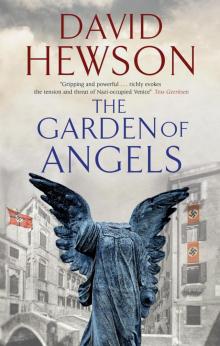 The Garden of Angels
The Garden of Angels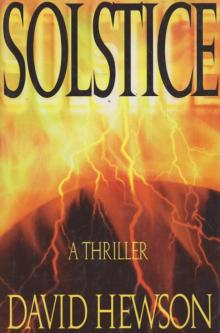 Solstice
Solstice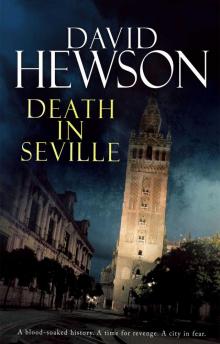 Death in Seville
Death in Seville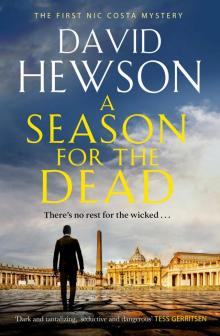 A Season for the Dead
A Season for the Dead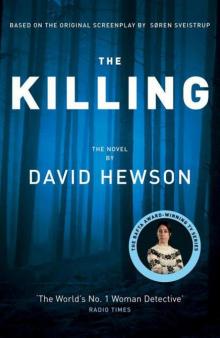 The Killing tk-1
The Killing tk-1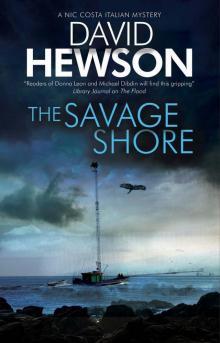 The Savage Shore
The Savage Shore Dante's Numbers
Dante's Numbers Sacred Cut
Sacred Cut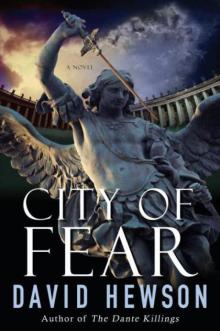 City of Fear nc-8
City of Fear nc-8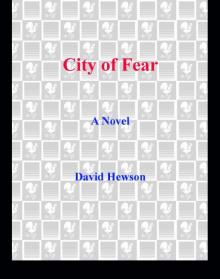 The Blue Demon
The Blue Demon The Garden of Evil
The Garden of Evil The Lizard's Bite
The Lizard's Bite The Wrong Girl
The Wrong Girl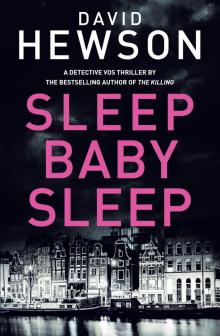 Sleep Baby Sleep
Sleep Baby Sleep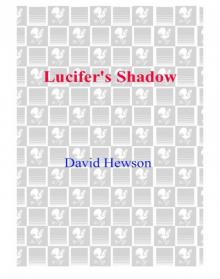 Lucifer's Shadow
Lucifer's Shadow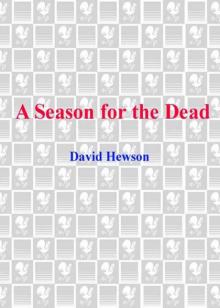 Season for the Dead
Season for the Dead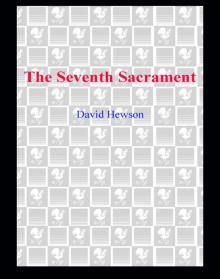 The Seventh Sacrament
The Seventh Sacrament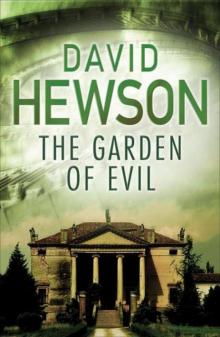 The Garden of Evil nc-6
The Garden of Evil nc-6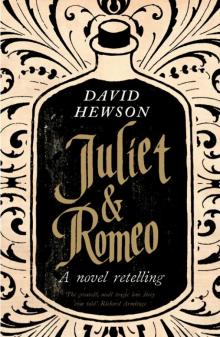 Juliet & Romeo
Juliet & Romeo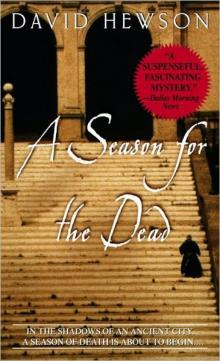 A Season for the Dead nc-1
A Season for the Dead nc-1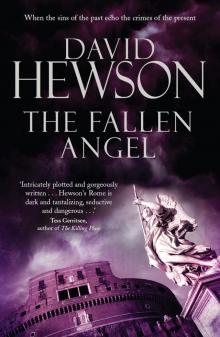 The Fallen Angel nc-9
The Fallen Angel nc-9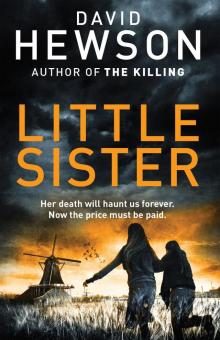 Little Sister
Little Sister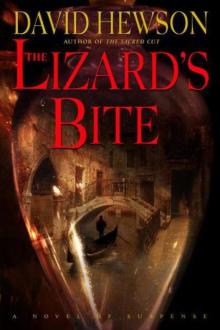 The Lizard's Bite nc-4
The Lizard's Bite nc-4 The Killing 2
The Killing 2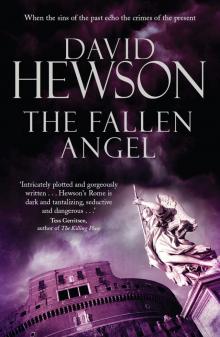 The Fallen Angel
The Fallen Angel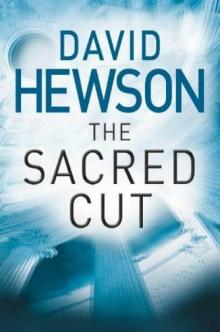 The Sacred Cut
The Sacred Cut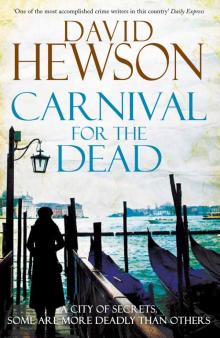 Carnival for the Dead
Carnival for the Dead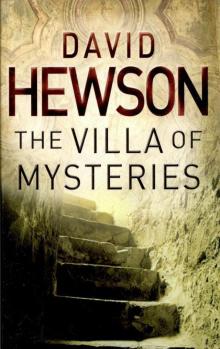 The Villa of Mysteries nc-2
The Villa of Mysteries nc-2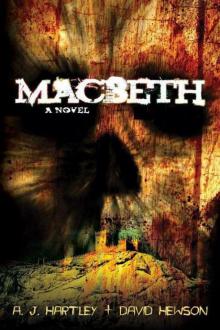 Macbeth
Macbeth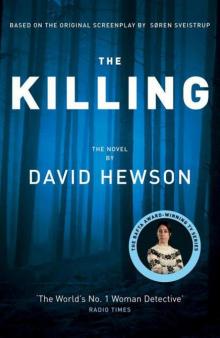 The Killing - 01 - The Killing
The Killing - 01 - The Killing The Villa of Mysteries
The Villa of Mysteries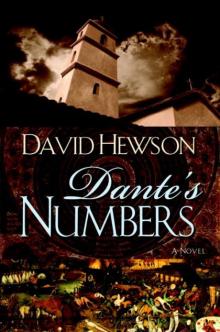 Dante's Numbers nc-7
Dante's Numbers nc-7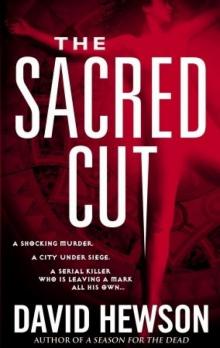 The Sacred Cut nc-3
The Sacred Cut nc-3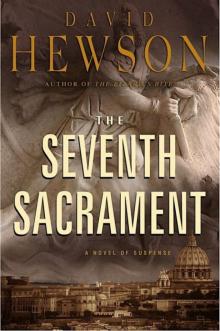 The Seventh Sacrament nc-5
The Seventh Sacrament nc-5